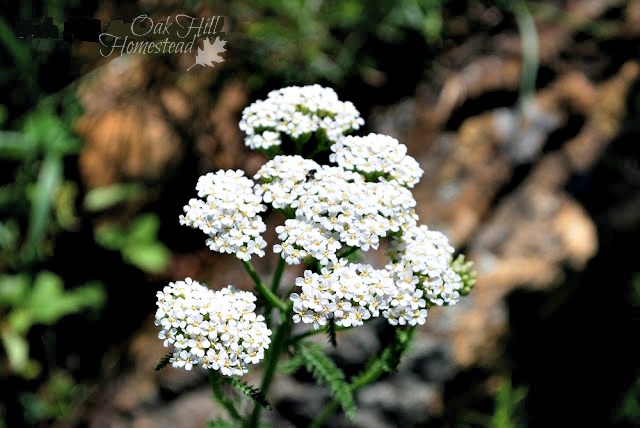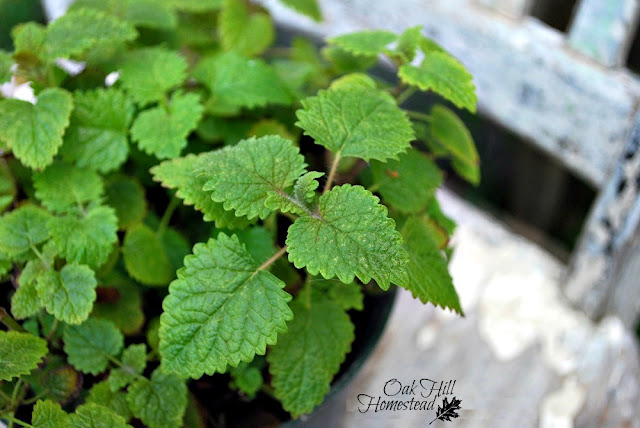Learn how to choose the best herbs for your garden based on your goals, whether you're cooking from scratch, making herbal remedies, or attracting pollinators. This practical guide covers culinary, medicinal, and tea garden herbs that thrive in containers, raised beds, or small spaces.
The Best Herbs to Grow in Your Garden
Whether you’re planting a few herbs in patio containers or building out a full herb garden in your backyard, growing herbs is one of the most satisfying and useful things you can do as a gardener.
Herbs are practical, low-maintenance, and incredibly versatile. You can use them in the kitchen, in your homemade remedies, for tea, or even just to invite more pollinators to your garden.
The variety of herbs available can feel overwhelming at first, but the key is to start with a purpose. Once you decide how you want to use your herbs, the rest falls into place.
Why You Should Be Growing Herbs
Herbs are an easy win in almost any garden. They grow well in containers, raised beds, planted between flowers or vegetable plants, or in their own dedicated space. You can even grow them on a sunny windowsill if outdoor space is limited.
But more than that, herbs are incredibly useful. Here are a few examples:
- If you find yourself regularly buying culinary herbs at the grocery store, growing your own can save money and elevate your cooking with fresh flavor.
- If you’re interested in herbal remedies or want to reduce your reliance on over-the-counter products, a well-planned herb garden can supply the basics of your home apothecary.
- Many herbs also attract pollinators, improve soil, deter pests, and offer beauty and fragrance. There's no reason not to grow them.
Choose Herbs with a Purpose
Instead of trying to grow one of everything, start by thinking about how you’ll use your herbs. That will help narrow down your choices and make sure you’re growing plants that earn their keep.
If you cook regularly, start with the herbs you reach for in your spice rack. Basil, chives, dill, oregano, parsley, rosemary, sage, and thyme are popular culinary herbs that are easy to grow at home.
You can even theme your choices around your favorite dishes: grow a “pizza garden” with basil and oregano, or plant a French-inspired mix with tarragon, thyme, and marjoram.
If you’re focused on wellness or herbal medicine, start with foundational herbs that offer a wide range of uses. Chamomile, lemon balm, yarrow, echinacea, peppermint, and comfrey are great starter plants for a medicinal herb garden.
I bought my first comfrey ten years ago, and have divided it many times, shared it with friends, and brought some with me when we moved. I’ve written about why comfrey deserves a spot in your garden here, even if you don’t plan to use it medicinally.
Herbal teas are another easy way to begin herb gardening. If you enjoy a calming cup of tea in the evening, plant herbs like chamomile, catnip, lemon balm, peppermint, lavender, calendula, bee balm (monarda), and thyme. These herbs are easy to grow and can be harvested and dried right at home.
Some herbs are worth growing simply because they smell wonderful or because they’re beautiful. Lavender, rosemary, sage, lemon balm, and the many varieties of mint offer incredible fragrance and make lovely additions to your garden beds. Even brushing your hand across a rosemary plant can lift your mood.
Growing Herbs in Containers
Most herbs adapt well to containers, which makes them perfect for small spaces, patios, or kitchen gardens.
Use pots that are at least 8 to 10 inches wide for single plants, and make sure they have good drainage. Terra cotta pots are a great choice because they breathe, helping to keep roots from staying too wet. Plastic, ceramic, metal, or even wooden containers can work well as long as they drain properly.
If your container doesn’t have drainage holes, you’ll need to drill or poke some in the bottom. Most herbs prefer well-drained soil and will suffer if the soil stays soggy.
However, herbs in containers dry out faster than those planted in the ground, so plan to water more frequently, especially during hot, dry weather.
Use a high-quality potting mix (not garden soil), and consider adding a bit of compost or perlite to improve drainage and nutrients.
Growing Herbs in Raised Beds or In-Ground Gardens
If you have space, herbs thrive when planted directly in raised beds or in the ground. Just be aware that some herbs, such as mint and oregano, spread aggressively and are best kept in their own space or in containers to prevent them from taking over.
Group herbs with similar soil and water needs together. Mediterranean herbs like rosemary, thyme, and lavender prefer drier soil and full sun. Others, like parsley and mint, will tolerate a bit more moisture and partial shade.
Before planting, loosen the soil and add compost if needed to improve texture and fertility. Most herbs don’t need heavy feeding, but they do appreciate good soil and six hours or more of sunlight per day for most varieties.
Easy Herbs to Grow from Seed
If you want to start herbs from seed, there are several beginner-friendly options.
Basil, calendula, cilantro, dill, parsley, chervil, and sage are all reliable germinators and don’t require much fuss.
You can sow them directly in the garden after your last frost or start them indoors a few weeks early for a head start.
You'll find a wide selection of herb seeds at Mary's Heirloom Seeds. I've always been happy with the seeds I've purchased from Mary.
Herbs That Attract Pollinators
Whether or not pollination is your main goal, it’s worth planting a few herbs just for the bees and butterflies.
Monarda (bee balm), lavender, anise hyssop, lemon balm, mint, chives, thyme, catnip, basil, and sage are excellent nectar sources.
Let a few of your basil or chive plants go to flower - it’s a simple way to support pollinators without much extra effort.
If you're growing herbs for culinary or medicinal use, keep in mind that the flavor and potency of the leaves often change once the plant flowers. You can let one or two plants bloom for the pollinators while harvesting the rest before they go to seed.
Dill, parsley, and fennel also serve as host plants for butterfly larvae, particularly swallowtails. If you notice caterpillars munching the leaves, congratulations! You’re doing your part to support the pollinator population.
You might want to plant those caterpillar favorites in several spots in your garden, and move all the larvae to one area so you have enough to harvest for your own use.
Fragrant herbs you'll love to grow
If you'd like to grow herbs strictly for their delightful fragrances, try lavender, lemon balm, sage, any variety of mint including orange mint and chocolate mint as well as peppermint, and rosemary.
I love brushing my hand along the plants to release their uplifting scents.
Your Herb Garden, Your Way
Herbs are one of the most rewarding things to grow. They’re beautiful, useful, fragrant, and incredibly productive. Whether you’re cooking from scratch, making your own remedies, blending herbal teas, or simply want to watch bees buzz through the garden, herbs deserve a spot in every backyard.
Start with a handful of plants that match your needs and your climate. Choose herbs you’ll actually use: in your kitchen, the medicine cabinet, to attract pollinators, or simply for their amazing fragrance.
Growing your own herbs is sustainable and money-saving. And who can resist the scent of lavender on a summer morning, or a cloud of butterflies fluttering about in a garden?
For more gardening and self-sufficient posts like this, subscribe to my weekly newsletter The Acorn, and join me on Facebook, Instagram and Pinterest.
~~~~~
Facebook | Instagram | Pinterest | Subscribe

Kathi Rodgers is the gardener and writer behind Oak Hill Homestead (est. 2009) and the host of HOMEGROWN: Your Backyard Garden Podcast. With over 30 years of gardening experience in a variety of climates and soils, she helps new and aspiring gardeners grow healthy, organic food right in their own backyards.
A passionate advocate for simple, self-reliant living, Kathi is the author of multiple ebooks, a published magazine contributor, and shares practical advice with readers who want real-life solutions they can trust. She was also the publisher and editor of a long-running subscription newsletter (on an entirely different topic: cats).
Kathi lives in Oklahoma, where she grows more cherry tomatoes than she can count and keeps a watchful eye on tornado season. A proud grandma and great-grandma, she believes that wisdom - like a bountiful garden harvest - should be shared.


















